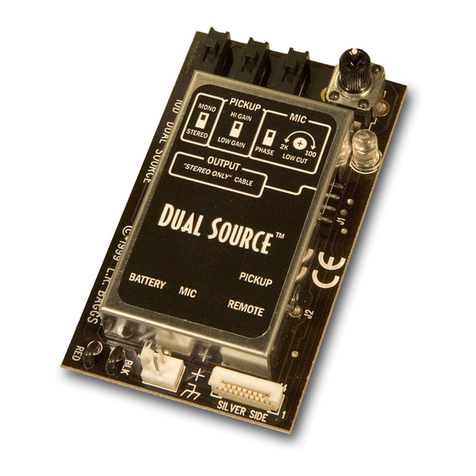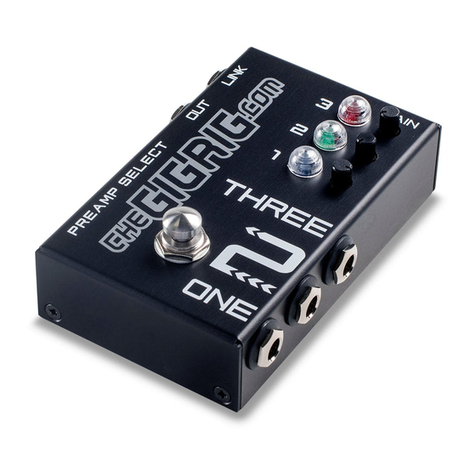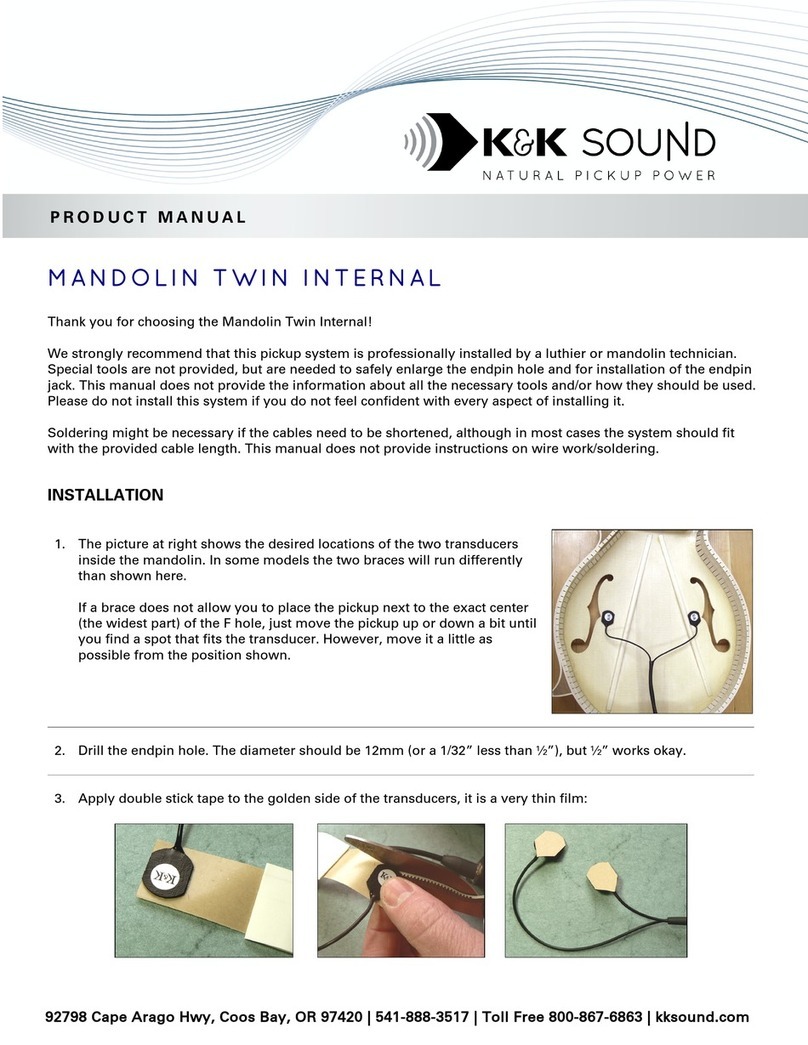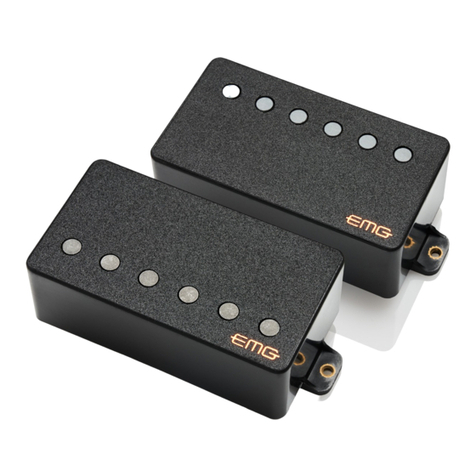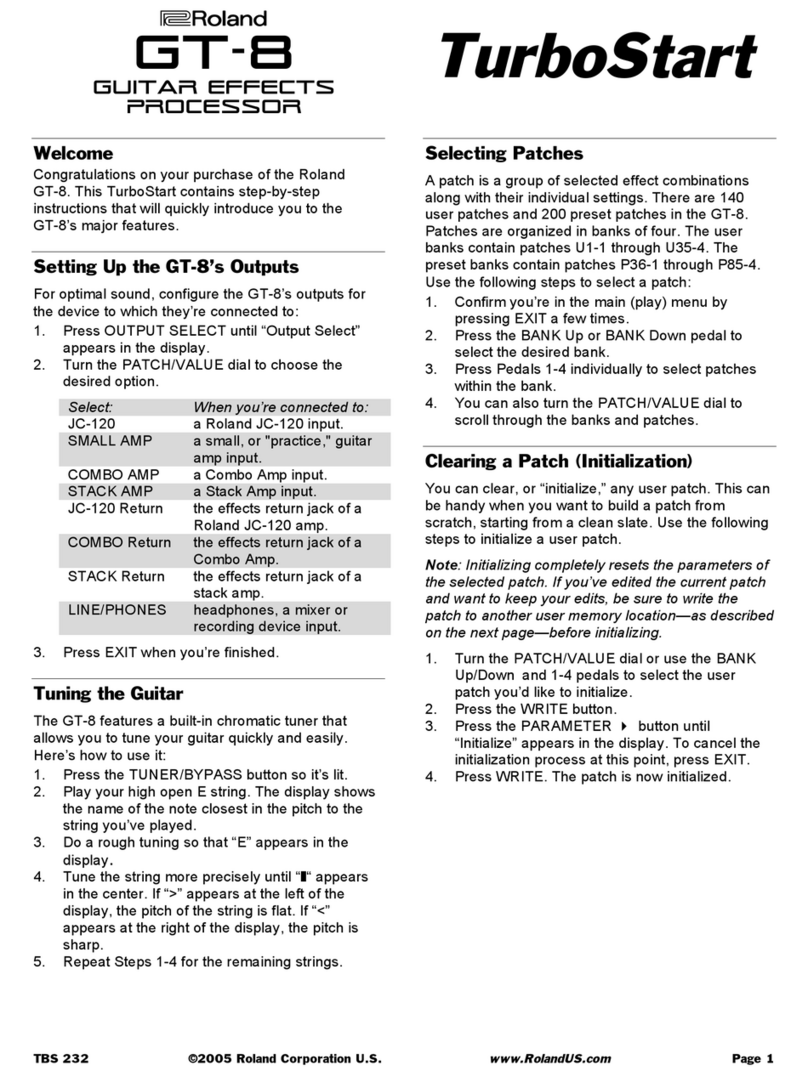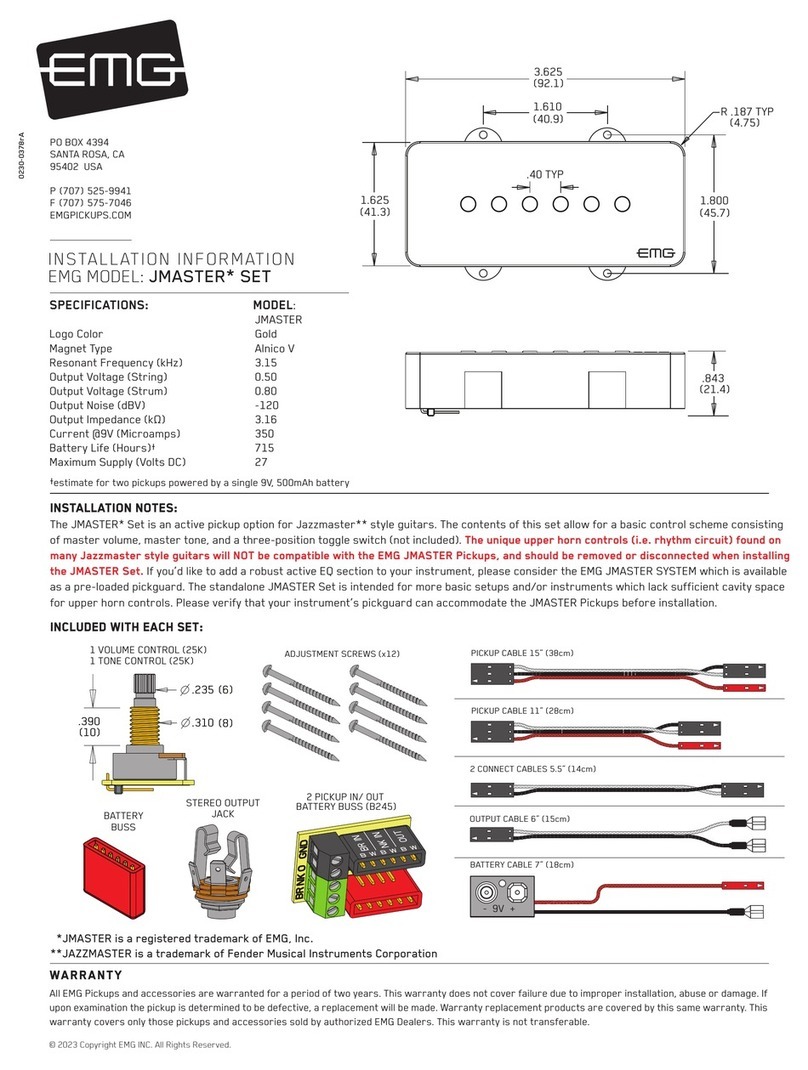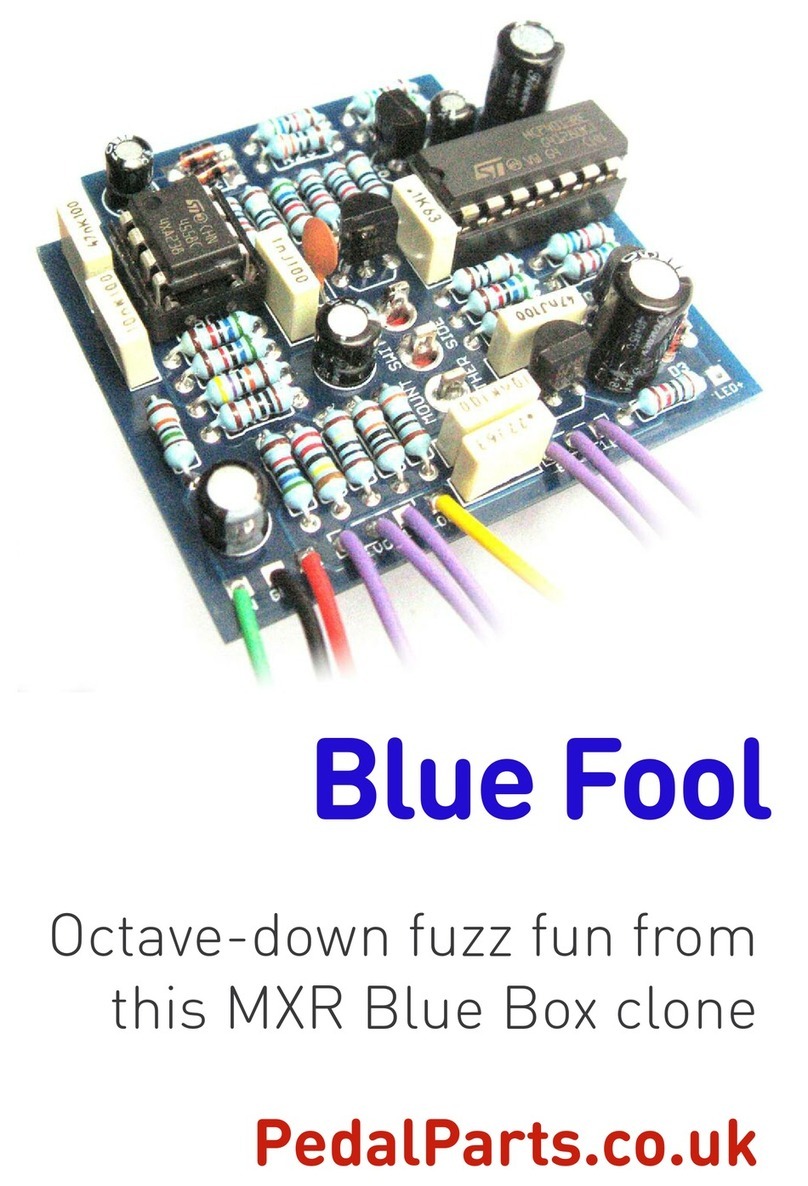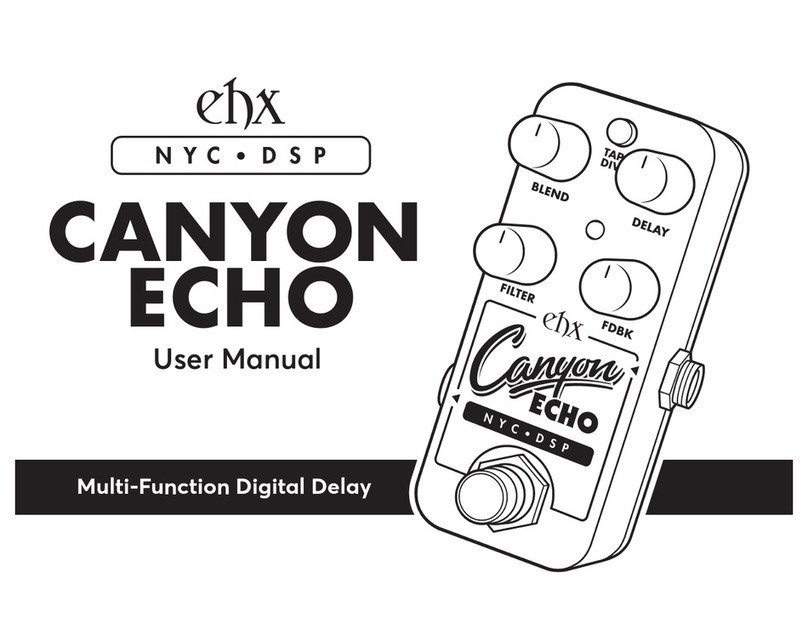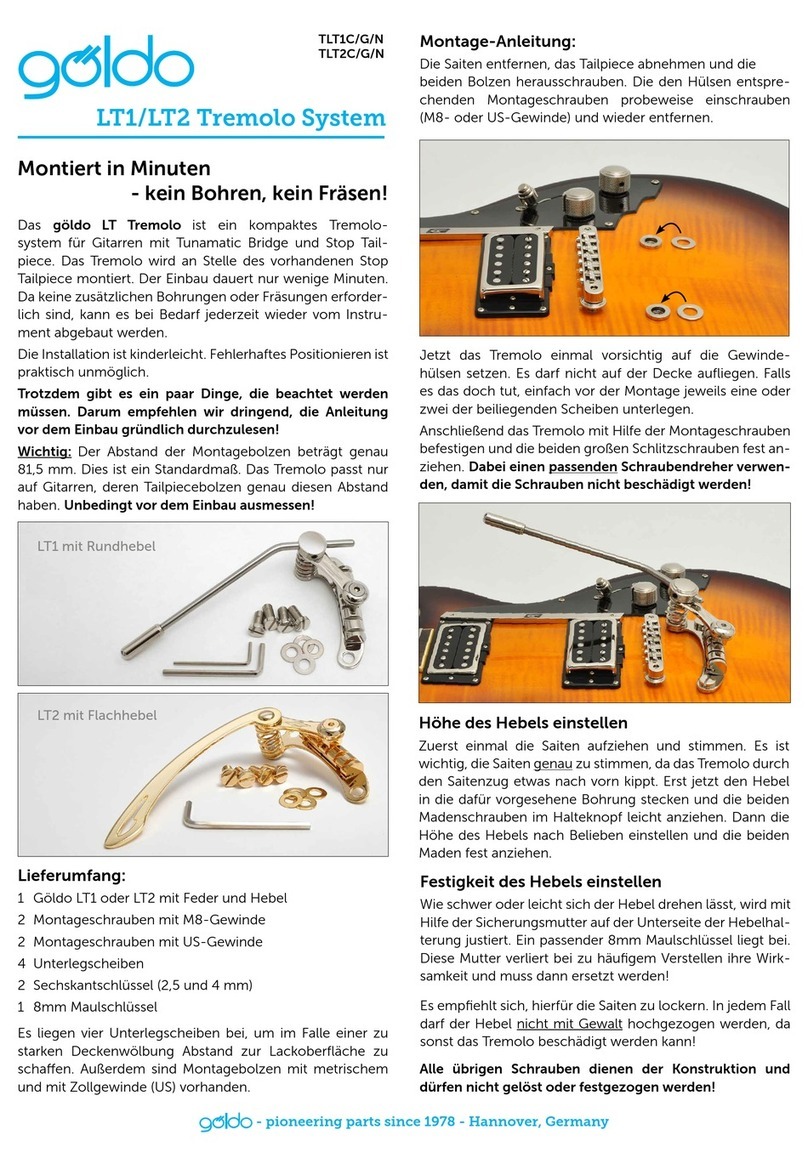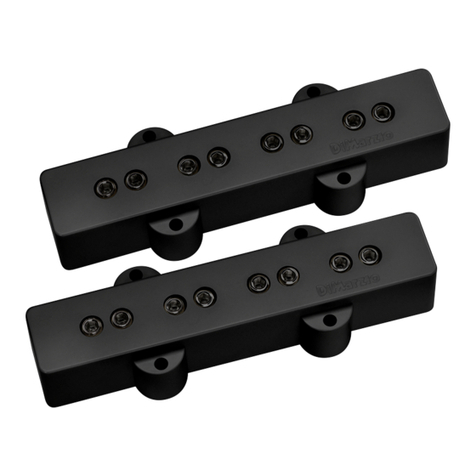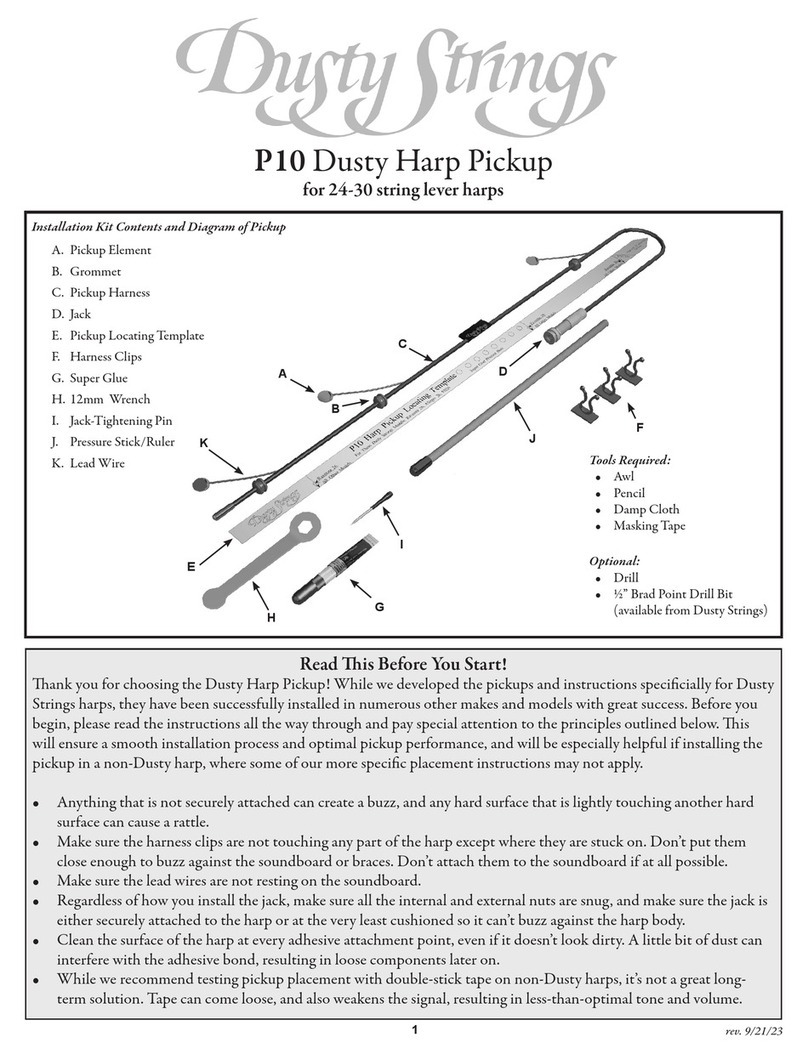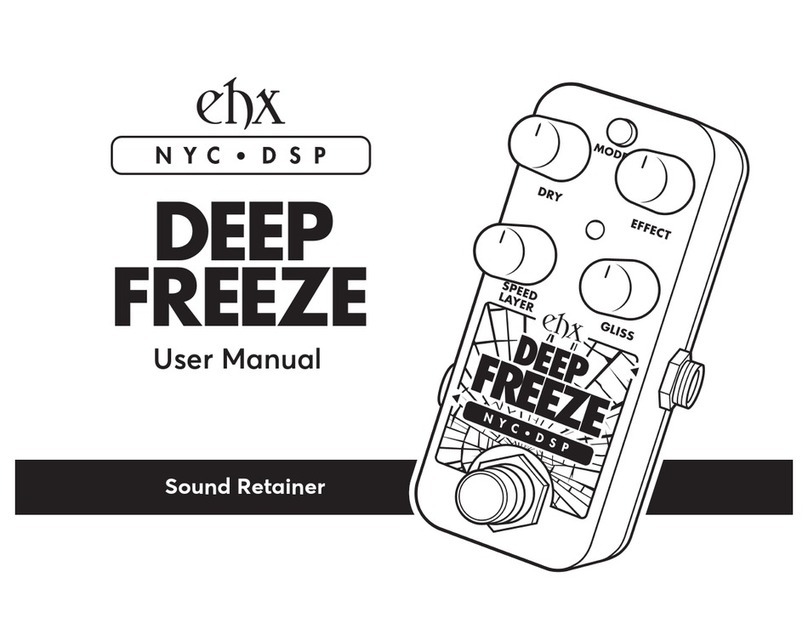Floyd Rose SPEEDLOADER BRIDGE SYSTEM User manual

732.918.7001
FLOYDROSE.COM
SPEEDLOADER BRIDGE SYSTEM

WHY WERE THE SPEEDLOADER BRIDGES
AND STRINGS DEVELOPED?
In 1991, I started developing what eventually evolved into SpeedLoader bridges and
SpeedLoader strings. My goal was to eliminate the need for the use of Allen-wrenches and
wire-cutters to change strings on my Original and Pro Tremolo bridges and design a fixed
bridge with similar advantages.The SpeedLoader bridges and strings have accomplished
this goal.
The first thing I’d like to show you are the SpeedLoader strings, because the magic of this
tuning system is in the strings.
SpeedLoader strings are made with one bullet applied to each end. SpeedLoader strings
are made to within .002 of one inch in length, and every string has its own precision length.
This precision allows you to change a string and return to perfect tune in seconds.
Some of you might ask…“What about the string stretching?”so I’d like to take a moment
and clear up some things about string stretching.
There are two reasons string stretching is necessary on guitars. First, the strings must be
deformed or bent around the tuning key to follow the curvature of the tuning key post.The
second reason for string stretching is to deform the string to bend over the bridge and nut.
The more string you wind around the tuning key post the more “stretching”the string
requires to make the string wrap tightly around its post.The amount of deformation at the
bridge depends on the type of bridge you have on your guitar.
Guitars with SpeedLoader bridges don’t need tuning keys, so the aggressive pulling or
stretching is unnecessary. In fact, if you pull too hard on the strings you may actually
damage them. I’ll try to explain why.
A steel string has an elastic range like a rubber band.This means that it can be stretched
like a rubber band, and, like a rubber band, it becomes thinner as it is stretched.When
released the string, or rubber band,returns to its original width, unless it has been stretched
too far. If a rubber band is stretched too far, it breaks. However, if a steel string is over-
stretched, it becomes permanently thinner somewhere along its length, and thus the string
is a little bit longer, and therefore lower in pitch, than it was before it was over-stretched.
Having thinner places along the string length can cause the string to vibrate erratically and
sound out of tune.
The point I’m trying to make is, when you change strings, don’t stretch them aggressively.
I recommend that you press down on the strings just in front of the bridge saddles and
just in front of the nut.Then give each string one or two medium hard pulls and just play
the guitar from there.That’s all the seating the strings need.

Please note: SpeedLoader strings are offered in
two scale lengths, 25.5 in. and 24.75 in. If you’re
not sure what scale length your guitar is, consult
the guitar manufacturer or the store where you
purchased the guitar.
Make sure you have purchased the correct scale
length strings for your guitar.The string scale length
appears in the lower left corner of the string
package.
To purchase strings go to: www.floydrose.com or
ask for them at your local dealer.
1
To replace a string, push down on the back of the
saddle of one of the strings.
2
Then, pull back on the sliding latch by placing the
first finger of your free hand on the black knob
protruding out the back of the saddle.Then place
your thumb on the fin sticking up just behind the
fine tuner screw and pull the latch back with a
pinching action between the thumb and first finger.
3
Once you have pulled back on the sliding latch,
release the saddle and allow it to rotate forward.
4
Now remove the bullet from the saddle.
REMOVING STRINGS

5
I should point out here that if you’re replacing a
broken string, when you unlatch the pivoting saddle
there will be no tension on the string to pull the
pivoting saddle forward.You’ll have to pivot the
saddle forward with your finger.
You can now remove the bullet on the other end of the
string from the nut by simply sliding it out the back of
the nut.
6
If you try to release a saddle and pull back on the
sliding latch and it doesn’t budge,release everything
and start over making certain that you don’t turn
the sliding latch sideways. If the sliding latch turns
on its shaft, the safety catch portion of the sliding
latch will not line up properly with the safety catch
portion of the pivoting saddle and will cause
binding.
The safety catch is there to prevent the string from
accidentally releasing while playing or changing
strings.This is what the safety catch looks like up
close.This all sounds tricky, but it’s not.You’ll have
it down after replacing a couple of strings.
Now, let’s put on a replacement string.
LOADING STRINGS
1
To put on the new string, simply slide one of the
bullets into the nut, then place the other bullet
into the appropriate saddle and push down on the
back of the saddle until you hear, or feel, a snap.

2
This sound is the spring-loaded sliding latch snapping
into place.If you don’t hear or feel the snap,push the
sliding latch toward the saddle until it catches.Making
sure the sliding latch is all the way forward to its
locked position is important because if it isn’t,
two things will happenÚ
1) The replaced string will be held sharp, and
2) The safety catch will not be engaged, so the
string could suddenly and unexpectedly be released
and fly across the room.
3
Now that the new string has been properly installed
you should seat it.To seat the new string, press
down firmly on the string just in front of the saddle
and just in front of the nut.
4
Then do a couple of stretching pulls on the string.
5
The string is now seated and no more stretching
is necessary; just play. In fact, if you stretch the
string too vigorously, you will damage the string.
Just play the string in for a bit and re-adjust your
tuning with the fine-tuning screw as needed.
If the string you’re replacing was tuned to your
desired pitch, the new string you install should be
able to be tuned to that pitch with the fine tuner
screw. If the fine tuners do not have enough range
to tune the new string to the previous pitch you
will need to adjust the range tuner setscrew as
described below. See: “Setting the fine tuner range
on the SpeedLoader Tremolo.”

SETTING UP THE SPEEDLOADER
TREMOLO BRIDGE BASE PLATE
The proper set-up of the SpeedLoader Tremolo
Bridge looks exactly like a properly set-up Original
Floyd Rose Tremolo Bridge. By the way, the
SpeedLoader Tremolo will retrofit an Original Floyd
quite easily.
The first thing you’ll want to do is check to see if
the top surface of the base plate of the bridge is
sitting parallel to the top surface of the guitar.
If the base plate appears to be tilted forward away
from the top surface of the guitar or tilted back
closer to the top of the guitar, then an adjustment
should be made.
1
To level the base plate, first take the spring cover
plate off the back of the guitar.
2
Inside the spring cavity you should find a tremolo
stop.
3
If this part is missing, stop right here and get one
installed by a qualified guitar repairman. Call us
at 732-918-7001 for this part.
Depending on the guitar you purchased,the tremolo
stop may or may not be engaged with the spring
block.
We will assume it is not engaged and show you
how to engage it.
Take the 3mm Allen wrench and turn the set screw
until the set screw touches the spring block.

4
Now,tighten the springs with the spring claw screws
so the spring block is pulled tightly against the
set screw.
5
Another way to pull the spring block against the
tremolo stop set screw is to add another spring
to the spring block and claw. Using this method
is preferred because it will be easier to re-float
the tremolo after setting up the bridge.
6
Now check the base plate position. If it is not
parallel to the face of the guitar body, turn the set
screw until the base plate is parallel.
7
After you get the base plate parallel, check your
string action. If your strings are too high or to low
for you, adjust the action with the two rocker
screws, using a 3mmAllen wrench until the action
is where you like it.
When you get the base plate parallel with the face
of the guitar, the action properly adjusted,and the
tremolo stop firmly engaged with the spring block,
you are ready to set the fine tuner range or intonate
the guitar.
These procedures follow…

Like the Original Floyd Rose, there are several
situations that will cause the SpeedLoader fine
tuners to run out of range. If this happens don’t
panic, the fine tuner range can be reset.
To reset the fine-tuner range, first engage the
tremolo stop and set the bridge position as
described in the “Setting up the SpeedLoader
Tremolo Bridge base plate”section above.
With the base plate set properly and the tremolo
stop properly engaged, you’re ready to set your
fine tuner range. If only one or two of the fine
tuners are out of range you may want to try adjusting
them without engaging the tremolo stop.
1
The first thing you do to reset the range of all the
fine tuners is to position all the fine tuner screws
to the middle of their possible movement.
2
One way to do this is to turn the low “low E”string
fine tuner screw all the way up, then turn the
“D”string fine tuner screw all the way down.
Now, position the “A”string fine tuner screw half-
way between the “E”and the “D”fine tuner screw
positions.
3
Now, leaving the “A”string fine tuner where you
set it, reposition all the other fine tuner screws to
match the height of the “A”string fine-tuner screw.
You should now have all of the fine-tuner screws
set to the middle of their range. Ignore the fact
that your guitar is now completely out of tune;
we’re going to fix that next.
At this point you’re ready to tune your guitar using
what I call the range tuner set screw. You can set
your guitar up for standard pitch, any open tuning,
or any drop tuning using the range-tuner set screw.
Remember: do not use the fine tuner screws to
tune the guitar at this point.
4
A range tuner set screw is located in the nose of
each pivoting saddle.
SETTING THE FINE TUNER RANGE
ON THE SPEEDLOADER TREMOLO

5
Using a 1.5mm Allen wrench and the range tuner
set screw, tune your guitar to any tuning you desire.
You can increase the pitch of a given string by
turning the set screw clockwise, and decrease the
pitch of the string by turning the set screw counter-
clockwise. (Remember not to use the fine tuner
screws for this tuning.)
Now that you have tuned your guitar to the tuning
you want, the bridge should be properly set-up,
and the fine tuners should be set to the middle of
their range.
The way your guitar is set up now is what is called
a “blocked”setup.This means that the tremolo
can be used for dive effects but you can’t pull
up on the arm for up-bends.You can leave your
guitar the way it is, or you can disengage the
tremolo stop to return the tremolo to what is
called a “floating”setup. However, before you
return the bridge to a floating condition, you
might want to check your intonation. If your
intonation needs adjusting, go to the “Setting
your intonation”section below.
6
If you’re ready to float the tremolo, check your
tuning one last time and make any needed
adjustments using the range-tuner set screw.
Then, back the tremolo stop set screw away from
the spring block.This will cause the bridge to tilt
back toward the body of the guitar and all the
strings will go sharp.This is normal.
7
You must now retune the guitar, this time using
a Phillips screwdriver to turn the spring-claw
screws counter-clockwise to loosen the spring
tension. (If you added an extra spring to pull the
spring block against the tremolo stop screw, you
should remove it first.)
8
The good news is that you only have to retune one
string. Pluck the string you want to tune (I usually
tune the “A”string for this procedure) and then,
while watching the tuner, loosen first one claw
screw then the other claw screw the same amount.
Check the tuning and repeat until the string is in
tune.When you get the string you chose in tune,
the other strings will be in tune.This assumes that
all the strings were in tune before you released
the tremolo stop.

SETTING YOUR INTONATION
ON THE SPEEDLOADER TREMOLO
When your intonation needs adjusting, first engage
the tremolo stop by following the instruction above,
under: “Setting the fine-tuner range on the
SpeedLoader Tremolo.”
1
Once the tremolo stop is engaged, tune your guitar
to an electronic tuner. Now, check the intonation
of one of the strings to see if the intonation is sharp
or flat by chiming the string over the 12th fret.
2
Now fret the string on the 12th fret to see if the
pitch of the chimed note matches the pitch of
the fretted note.
If the fretted note pitch is lower than the tuned
pitch of the chimed note,this means the intonation
is flat. If the fretted note pitch is higher than the
tuned pitch of the chimed note, this means the
intonation is sharp.
3
To adjust the intonation, first remove the string
tension by unlatching its quick release saddle as
if you were going to remove the string. [Complete
instructions above.]
4
Then, using a 2.5mm Allen-wrench loosen the
saddle hold-down screw while holding the saddle
in place.
Be careful not to let the saddle move when you
release the hold-down screw. Now carefully move
the saddle in the desired direction.Move the saddle
toward the pickups if your intonation was flat or
away from the pickups if the intonation was sharp.
5
Carefully re-tighten the saddle hold down screw.
Re-latch the string and tune the string back to
the previous pitch using the range-tuner set screw,
not the fine tuners (see: “Setting the fine tuner
range on the SpeedLoader tremolo”), then check
the intonation and repeat the above procedure
on all the strings as needed.
After you have set the intonation, you can re-float
the bridge following the instructions above, under:
“Setting the fine tuner range on the SpeedLoader
Tremolo.”
If you still have questions about any of the procedures above, please contact us at:
